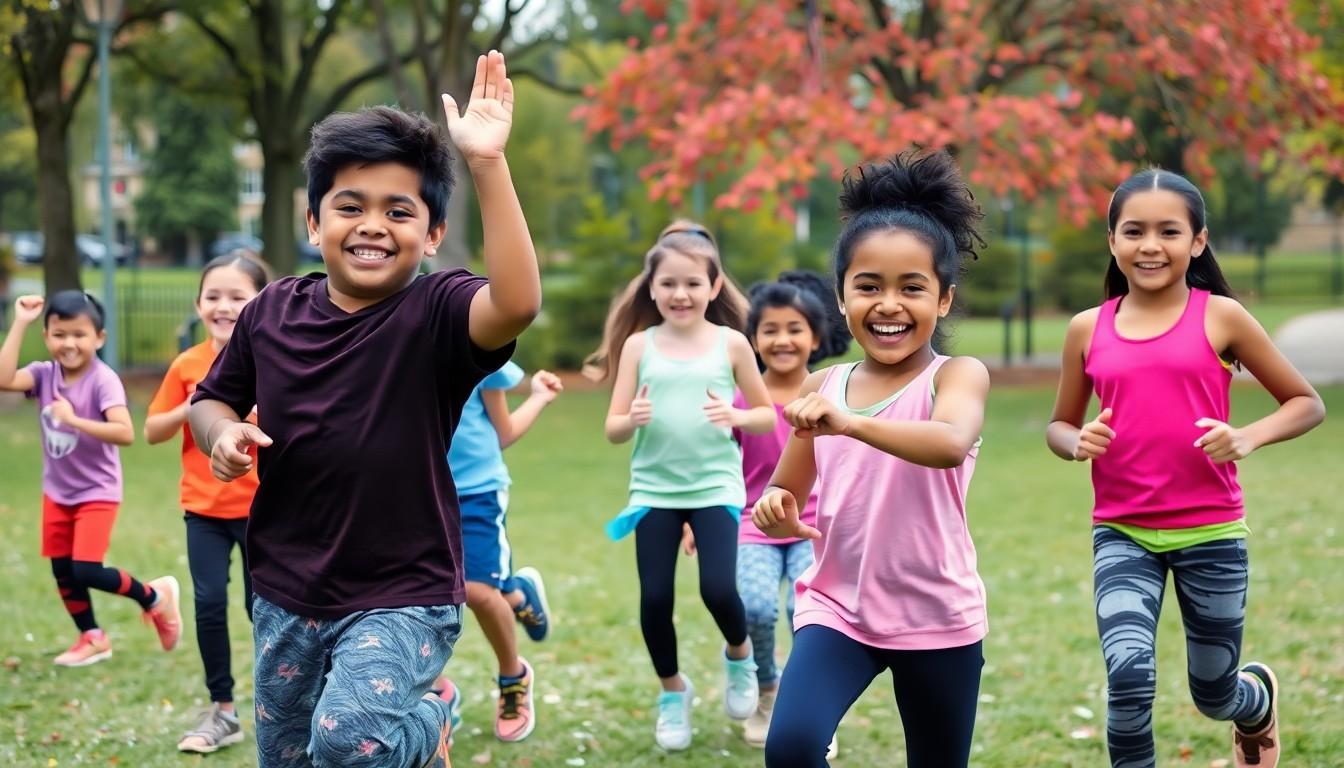The Best Fluffy Pancakes recipe you will fall in love with. Full of tips and tricks to help you make the best pancakes.
In a world where kids are glued to screens more than ever, getting them moving can feel like a Herculean task. But what if exercise could be as exciting as a treasure hunt or a dance party? Fitness classes for kids are the perfect solution, turning sweat into smiles and workouts into playdates.
Overview of Fitness Classes for Kids
Fitness classes designed for kids provide an excellent opportunity for children to engage in physical activities. These classes often include a variety of exercises such as yoga, dance, martial arts, and sports conditioning. Each type of class targets different fitness goals, from improving flexibility to enhancing cardiovascular health.
Attending fitness classes helps children develop teamwork and social skills. Engaging in group activities promotes camaraderie, making exercise a shared experience. Many classes are structured around games and challenges, keeping kids motivated and interested.
Structured environments in fitness classes foster discipline and routine. Regular participation encourages healthy habits that can extend into adulthood. Instructors often incorporate age-appropriate teaching methods, creating an enjoyable and safe atmosphere for children.
Research indicates that engaging kids in fitness activities supports mental health and academic performance. Active children tend to exhibit increased concentration levels and better mood regulation. The combination of physical activity and fun boosts confidence, leading to a positive self-image.
Parents appreciate that fitness classes provide a solution to screen-time concerns. These classes can be an essential part of a balanced lifestyle, allowing kids to unwind from technology while improving their physical fitness. Various programs cater to diverse interests, ensuring every child finds an activity they enjoy.
Fitness classes for kids promote physical well-being, enhance social interactions, and cultivate lifelong healthy habits. With structured guidance and engaging activities, children benefit both physically and emotionally from these programs.
Benefits of Fitness Classes for Kids

Fitness classes for kids offer numerous benefits that promote growth and well-being. Children gain both physical and mental advantages that help them thrive.
Physical Health Benefits
Engaging in fitness classes enhances overall physical health. Regular activity improves cardiovascular fitness, builds strength, and promotes coordination. Research shows that children participating in group activities exhibit greater endurance and flexibility. Classes introducing various exercises prevent monotony, making workouts enjoyable. Weight management also thrives as kids stay active, reducing the risk of obesity and related diseases. Additionally, structured routines help develop healthy habits that lay the groundwork for lifelong fitness. Group classes often involve games or sports, encouraging children to move and explore different physical skills.
Mental Health Benefits
Fitness classes significantly impact children’s mental health. Physical activity releases endorphins, leading to improved mood and emotional stability. Kids engaged in fitness show lower anxiety levels and enhanced self-esteem. Studies indicate active children experience better focus, which translates to improved academic performance. Social interactions within classes foster friendships, reducing feelings of isolation. Increased resilience emerges as children learn to handle challenges encountered during activities. Regular participation cultivates a positive attitude toward fitness, promoting lifelong mental well-being.
Types of Fitness Classes for Kids
Fitness classes for kids come in various types, each designed to engage young participants through fun and activity.
Dance Classes
Dance classes offer children an energetic way to express themselves. Participants can explore different dance styles such as hip-hop, ballet, or jazz. These classes improve coordination and rhythm while providing a creative outlet. Engaging with peers in a dance environment fosters teamwork. Instructors often incorporate games to keep classes fun. Children learn to follow instructions, enhancing discipline and focus.
Martial Arts
Martial arts classes instill discipline and respect while teaching self-defense techniques. Students can learn karate, taekwondo, or judo, which emphasizes physical fitness and self-control. The structured lessons promote goal-setting through belt rankings. Participants develop confidence and resilience as they progress through various challenges. Each class encourages students to interact socially, building friendships and camaraderie among peers.
Yoga
Yoga classes focus on flexibility, balance, and mindfulness. Young practitioners learn basic poses that promote physical strength and relaxation techniques. Instructors use playful approaches to keep children engaged during their sessions. Breathing exercises help enhance concentration and reduce anxiety. These classes also teach the importance of listening to one’s body and respecting personal limits.
Sports-Based Classes
Sports-based classes introduce children to various athletic activities. Options like soccer, basketball, or gymnastics are popular choices. These classes emphasize teamwork and communication skills. Participants improve their agility, strength, and endurance through structured drills and gameplay. Social interactions in a sports context create lasting friendships while fostering a sense of belonging among peers.
Choosing the Right Fitness Class
Selecting a fitness class for kids involves careful consideration of several factors to ensure the best experience.
Age Appropriateness
Age-appropriate classes suit children’s developmental stages. Younger children often thrive in playful environments, making classes like dance or martial arts enjoyable and engaging. Classes designed for older kids may focus on sports-specific skills or competitive practices. Ensuring the class matches the child’s age not only keeps them interested but also helps prevent injuries. Instructors should cater to the cognitive and physical abilities of each age group, promoting safety and fun.
Skill Level Considerations
Skill level must align with class difficulty. Beginners often benefit from fundamentals in dance or martial arts, focusing on basic techniques before advancing. Intermediate and advanced students can tackle more challenging routines, developing their prowess in a supportive atmosphere. Assessments by instructors can help place children in the appropriate level, fostering confidence and progress. Classes designed for various skill levels promote inclusivity while encouraging personal growth through structured progressions.
Conclusion
Fitness classes for kids offer a dynamic solution to combat the challenges of a screen-centric lifestyle. By transforming exercise into engaging activities, these classes not only promote physical fitness but also nurture essential life skills like teamwork and discipline.
Active participation contributes to improved mental health and academic performance, creating a well-rounded approach to children’s development. With diverse options available, parents can find the perfect fit for their child’s interests and needs.
Encouraging kids to embrace fitness at an early age lays the foundation for a lifetime of healthy habits and positive social interactions. Investing in fitness classes is a step toward fostering a happier and healthier generation.


